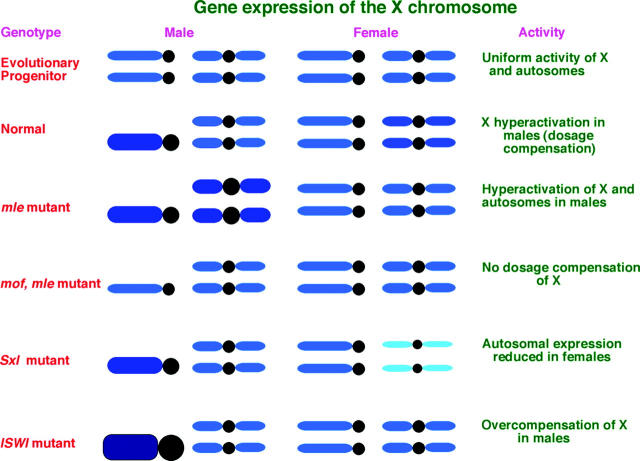Figure 9.—
Summary of gene expression. The evolutionary progenitor situation to the heteromorphic sex chromosomes in Drosophila is assumed to involve a pair of homologous chromosomes with similar gene expression between the sexes. The current karyotype shows dosage compensation of the single X chromosome in males compared to two in females and nearly equal autosomal expression. Because the gene expression in the msl mutants shows hyperactivation of both the X and the autosomes, it is postulated that a global inverse dosage effect, typical of monosomic situations, is operating and that the MSL sequestration evolved to counteract this dosage effect on the autosomes. Retention of dosage compensation in the mof mutant males, but not in the double mutant, indicates that the MSL complex overrides the impact of histone acetylation, in this case when acetylation on the X is reduced. The loss of dosage compensation in the double-mutant mof; mle indicates that the MSL chromatin remodeling complex is necessary for the inverse dosage effect to operate. The failure to increase X expression when the MSL complex and increased H4 acetylation is targeted to the X's in females indicates the override also operates with increased acetylation. The overcompensation of the male X in the ISWI mutants suggests that this chromatin remodeling subunit is required for the override process.

